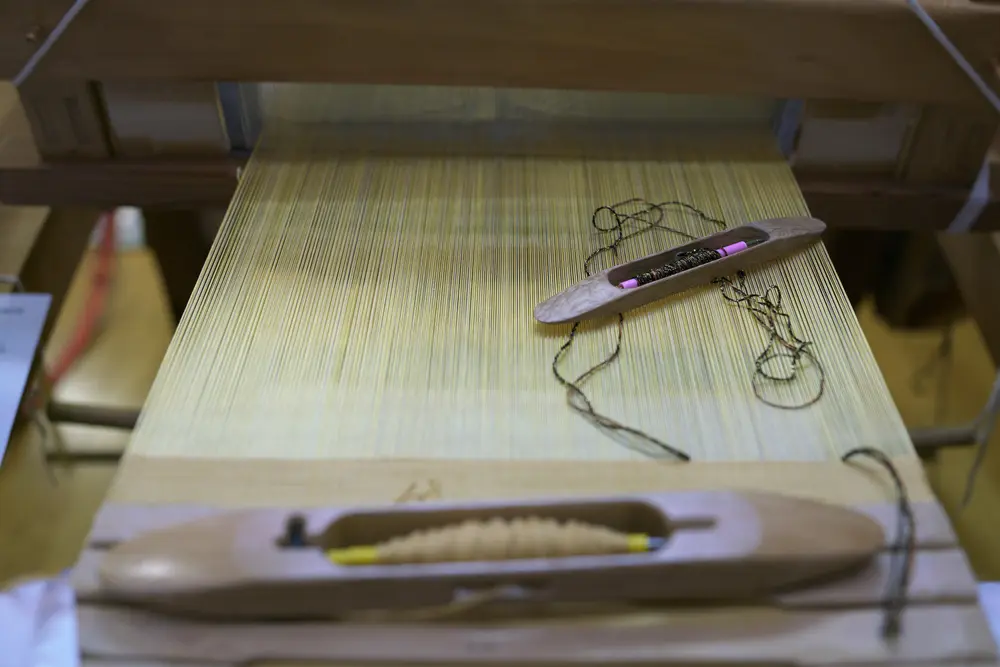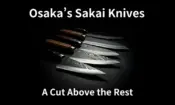Discover the Timeless Beauty of Nishijin-Ori: Kyoto’s Exquisite Woven Treasures
Kyoto, the ancient capital of Japan, is a city steeped in history and tradition. Among its many treasures, Nishijin-ori textiles stand out as a testament to the city’s rich cultural heritage. But what exactly is Nishijin-ori, and why should it be on your Kyoto bucket list? Let’s dive into the fascinating world of these exquisite fabrics.
A Tapestry of Time: The History of Nishijin-ori
The story of Nishijin-ori begins over a thousand years ago, during the Heian period (794-1185). It was a time of great artistic flourishing, and Kyoto, as the imperial capital, attracted skilled artisans from across the land. Among them were the Hata clan, master weavers who brought their expertise to the city.
Legend has it that Emperor Kanmu, the 50th emperor of Japan, was so impressed by the Hata clan’s craftsmanship that he granted them the exclusive right to weave textiles for the imperial court. This marked the beginning of Nishijin-ori’s rise to prominence.
The Onin War (1467-1477), a devastating civil war, ironically played a crucial role in the development of Nishijin-ori. As Kyoto burned, many weavers fled to the northwestern part of the city, known as Nishijin. They rebuilt their lives and their craft, establishing a thriving weaving district that continues to this day.
During the Edo period (1603-1867), Nishijin-ori reached its golden age. The Tokugawa shogunate, the ruling military government, actively promoted the arts, and Nishijin-ori became a symbol of wealth and status. The fabrics were used to create elaborate kimono and obi (sashes) for the elite, and their intricate designs and luxurious materials were highly prized.
The Art of Nishijin-ori: Threads of Tradition
What sets Nishijin-ori apart is its unparalleled craftsmanship. The weavers use only the finest silk threads, often interwoven with gold and silver, to create fabrics that are both visually stunning and incredibly durable.
Nishijin-ori is known for its intricate weaving techniques, which have been passed down through generations. One of the most famous techniques is “nishiki,” a type of brocade that creates raised patterns with a three-dimensional effect. Another technique, “tsuzure,” involves weaving weft threads of different colors to create tapestry-like designs.
The motifs and patterns found in Nishijin-ori are incredibly diverse, ranging from traditional nature-inspired designs like cherry blossoms and cranes to more modern geometric patterns. Each piece is a work of art, reflecting the weaver’s skill and creativity.
Nishijin-ori in Modern Kyoto: A Fashion Renaissance
While Nishijin-ori is deeply rooted in tradition, it’s also finding new life in the modern world. Today, you can find Nishijin-ori fabrics used in everything from high-fashion garments to home decor.
Kimono and obi remain the most iconic use of Nishijin-ori. These traditional garments are often made with the finest Nishijin-ori fabrics, and their intricate designs and luxurious feel make them a true symbol of Japanese elegance.
But Nishijin-ori is not just for kimono anymore. Fashion designers around the world are incorporating these textiles into their collections, creating unique and eye-catching pieces that blend tradition with modernity. You can find Nishijin-ori used in everything from dresses and jackets to bags and scarves.
Where to Experience Nishijin-ori in Kyoto: Your Textile Adventure Begins
If you’re visiting Kyoto, a trip to the Nishijin weaving district is a must. Here are a few places to explore:
Nishijin Textile Center
This is the heart of the Nishijin weaving district, and it’s a great place to start your exploration. The center has exhibitions showcasing the history and techniques of Nishijin-ori, as well as demonstrations where you can see weavers at work. There’s also a shop where you can purchase authentic Nishijin-ori products.
Orinasukan (Nishijin Textile Museum)
This museum offers a deeper dive into the history of Nishijin-ori. You’ll find historical artifacts, interactive displays, and even a chance to try your hand at weaving.
Hosoo
This renowned textile company is a leader in innovation, blending traditional Nishijin-ori techniques with modern design. Their flagship store is a must-visit for anyone interested in contemporary textile art.
Tips for Buying Nishijin-ori: A Wise Investment
If you’re considering purchasing Nishijin-ori, here are a few tips to keep in mind:
- Look for the label: Authentic Nishijin-ori products will have a label indicating their origin and the type of fabric used.
- Ask questions: Don’t hesitate to ask the shopkeeper about the history and craftsmanship of the piece you’re interested in. They’ll be happy to share their knowledge with you.
- Consider the price: Nishijin-ori can be expensive, but it’s a worthwhile investment. The quality and craftsmanship of these textiles are unparalleled, and they’ll last for generations.
- Care for your Nishijin-ori: These fabrics are delicate, so be sure to follow the care instructions provided by the seller. With proper care, your Nishijin-ori will continue to look beautiful for years to come.
Conclusion: A Timeless Treasure
Nishijin-ori is more than just fabric; it’s a living testament to Kyoto’s rich artistic heritage. From its humble beginnings in the Heian period to its modern-day renaissance, Nishijin-ori continues to captivate and inspire. Whether you’re admiring a kimono in a museum or wearing a Nishijin-ori scarf on a chilly day, you’re experiencing a piece of Kyoto’s timeless beauty.









